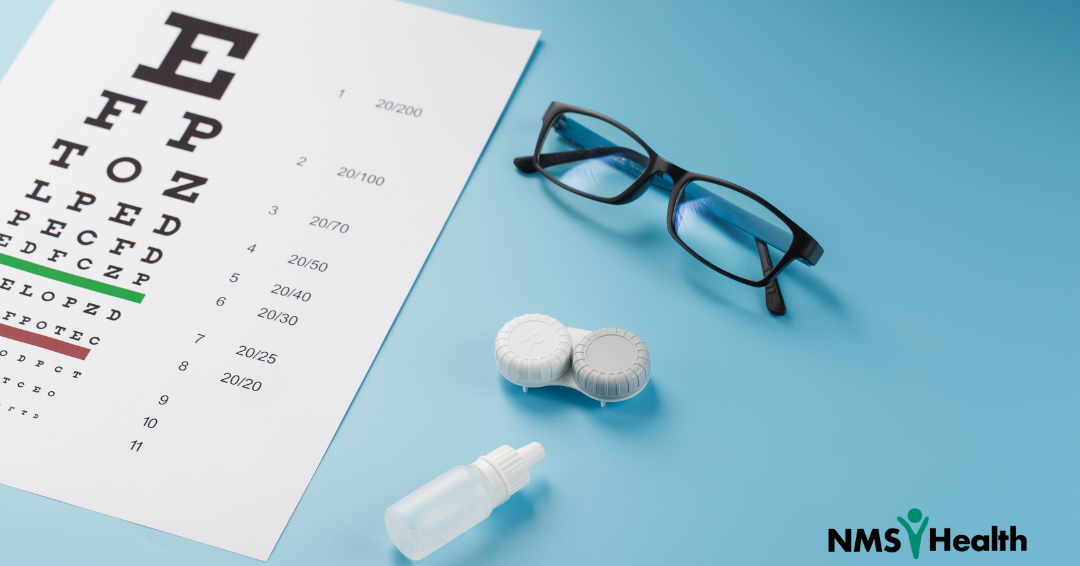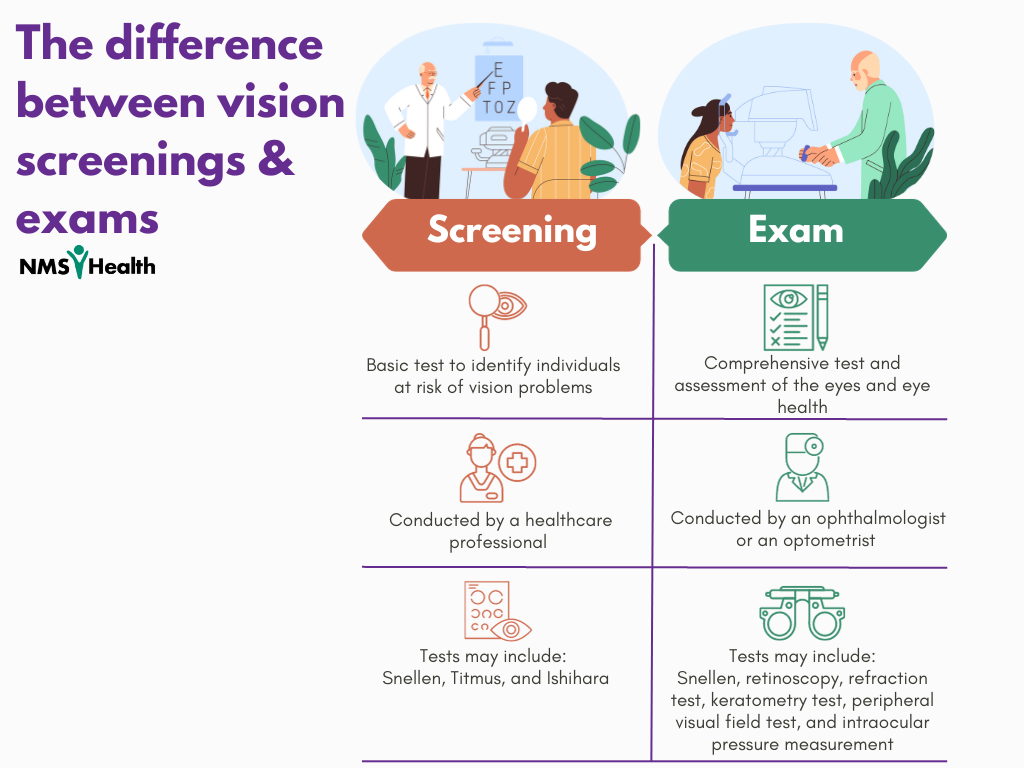In today’s fast-paced world, where visual stimuli abound, maintaining good vision is essential not only for individual well-being but also for workplace productivity and public health. Vision screening plays a crucial role in ensuring that our eyes are in top condition, and it is vital to understand its significance across various aspects of our lives.
Vision in the Workplace
In the workplace, issues like tired eyes, dryness, and eye strain are pervasive challenges. Surprisingly, even minor vision problems exert a significant toll on productivity and precision. Uncorrected vision, for instance, can lead to a remarkable 20% decline in productivity. This decline isn’t limited to those experiencing noticeable symptoms; even symptom-free individuals with uncorrected vision suffer from reduced productivity and accuracy.
What’s more, the impact extends to employees with perfect attendance, as uncorrected vision impairments diminish their efficiency. This phenomenon, known as “presenteeism,” results in productivity losses that are a striking 32 times greater than absenteeism alone.
Additionally, statistics from 2017 highlight the substantial indirect costs of vision disorders, reaching $35.5 billion. These costs encompass expenses related to absenteeism, decreased household productivity, reduced labor force participation, and informal care. Collectively, these statistics underscore the undeniable correlation between visual well-being and workplace effectiveness.
Annual vision screening is a pivotal component of an occupational health plan. More than 75% of Americans require vision correction, underscoring the widespread need for vision care. It is crucial for both employers and employees to recognize the value of vision care, as eye health significantly contributes to overall productivity.
Common Vision Ailments in Adults
As we age, the risk of developing vision problems increases. Some of the more prevalent vision ailments affecting older adults include:
- Refractive Errors: Refractive errors are the most common eye disorders. Refractive errors occur when the shape of the eye doesn’t bend light properly, so images become blurred. The four most common refractive errors are myopia (nearsightedness), hyperopia (farsightedness), astigmatism and presbyopia. It is estimated that refractive errors are a bigger cause of productivity loss globally than any other preventable vision disorder, costing approximately $272 billion.
- Age-related Macular Degeneration (AMD): AMD impacts the central vision, making tasks like driving, reading, and close work challenging. Early detection through regular eye exams is crucial for managing this condition effectively.
- Cataracts: Cataracts affect around half of Americans aged 65 and older, and symptoms may not appear until later stages. Regular eye exams help identify cataracts early, allowing for timely intervention.
- Floaters: Floaters, clusters of cells separated from the clear fluid inside the eye, can indicate more serious conditions, such as a detached retina. Prompt detection during an eye exam can lead to appropriate treatment.
Vision Screenings vs. Eye Exams
Vision screening is a basic test conducted by healthcare professionals to identify individuals at risk of vision problems. On the other hand, eye exams are comprehensive assessments performed by optometrists or ophthalmologists. While vision screenings serve as initial indicators, eye exams delve deeper into diagnosing and treating various eye conditions. Although not diagnostic, screenings help identify individuals at high risk for eye diseases and facilitate referrals for comprehensive eye exams.
The primary goal of vision screening is to identify individuals who may require further care, leading to comprehensive eye examinations and essential treatment.
What vision screening achieves:
- Identifies individuals at elevated risk for eye diseases or those in need of a professional eye examination through screening tests.
- Potentially detects eye disorders in their early and manageable stages.
- Offers valuable information and educational resources about eye care to the public.
- May lead to referrals to eye care professionals or primary care providers for a more thorough assessment.
What vision screening does not accomplish:
- It does not provide a definitive diagnosis of a vision disorder.
- It does not initiate a treatment plan.
Types of Eye Screening
Various types of eye screenings cater to different company needs and job candidate requirements. These screenings include:
- Snellen Chart: This widely recognized eye chart measures visual acuity and helps determine the smallest letters a person can read from a distance.
- Ishihara Test: This test checks for color blindness by asking individuals to identify numbers within circles filled with different solid colors.
- Titmus Vision Screener: This evaluation assesses eye sharpness, near and distance vision, binocular vision, peripheral vision, and color perception, depending on the occupation’s requirements.
Vision Screening During Physicals
To ensure that job applicants can perform their duties safely and effectively, employers may conduct pre-employment eye evaluations. These evaluations are vital, particularly for sensitive positions, as they can reduce the risk of accidents and potential company liability. The legal framework for these exams is governed by the Americans with Disabilities Act (ADA), which prevents discrimination against qualified individuals with disabilities. “An employer cannot require an individual to take a vision test with uncorrected vision or meet a vision standard with uncorrected vision unless that test or standard, as used by this employer, is shown to be job-related and consistent with business necessity.”
To ensure that your candidates and employees can perform their duties to the best of their ability, sometimes it is necessary to have a vision test performed. Some positions have a vision test result requirement such as DOT drivers, but other companies elect to have them performed for those in certain positions.
Vision tests can be included in pre-employment exams, as well as annual exams to gage and catch vision problems as early as possible. Maintaining proper vision, including the use of visual aids for individuals with impairments, can play a significant role in diminishing workplace fatigue and accidents, ultimately enhancing overall job performance.
While standard non-DOT physical exams usually include basic vision acuity tests, DOT (Department of Transportation) physicals for commercial drivers include a comprehensive vision test. These exams ensure that individuals are fit to perform their specific job roles safely.
Vision Screenings Across Industries
Certainly, vision testing is beneficial for a wide range of occupations, as it plays a crucial role in ensuring the safety, efficiency, and overall job performance of individuals in various fields:
Healthcare Workers
Healthcare professionals, including doctors, nurses, and medical technicians, rely heavily on their vision to diagnose and treat patients. They need to accurately read medical charts, administer medications, and perform surgical procedures with precision. Vision testing ensures that healthcare workers can provide high-quality care while minimizing the risk of errors that could harm patients.
DOT Drivers
Commercial drivers with a Department of Transportation (DOT) license, such as truck drivers and bus drivers, have a tremendous responsibility to transport goods and passengers safely. Adequate vision is critical for detecting hazards on the road, reading road signs, and making split-second decisions. DOT-mandated vision tests help ensure that drivers can operate vehicles safely, reducing the risk of accidents and injuries.
Heavy Machinery Operators
Operators of heavy machinery, such as bulldozers, cranes, and forklifts, must have excellent depth perception and peripheral vision. Their ability to navigate construction sites and industrial facilities safely depends on their vision clarity. Vision testing helps identify any visual impairments that could compromise their safety and the safety of those around them.
Construction Workers
Vision is a construction worker’s primary tool for assessing measurements, reading blueprints, and ensuring that structures are built correctly and safely. Accurate depth perception and color vision are particularly important in the construction industry. Vision tests help confirm that construction workers can work effectively and reduce the risk of errors that might lead to costly rework or accidents.
Electricians
Electricians work with intricate wiring and electrical systems, often in confined spaces. Their ability to distinguish wires by color and read small labels on electrical components is crucial for safety and preventing electrical mishaps. Regular vision testing ensures that electricians can perform their duties accurately, reducing the risk of electrical accidents and fires.
Manufacturing and Factory Workers
Workers in manufacturing and factories often operate machinery and perform tasks that require precision and attention to detail. Vision testing is vital to ensure that these workers can spot defects in products, read gauges and instruments, and maintain consistent quality control. Accurate vision reduces errors in the production process and contributes to overall product safety and quality.
In all these occupations, vision testing not only enhances individual job performance but also contributes to workplace safety. Employers typically mandate vision tests as part of pre-employment screening and may require regular follow-up testing to ensure that employees maintain adequate vision throughout their careers. This proactive approach helps prevent accidents, reduces liability, and promotes a safer and more productive work environment for everyone involved.
Get Started
Discover the comprehensive solutions offered by NMS Health, a trusted full-service occupational health provider serving all 50 states. Let us assist your company in implementing an exam program that prioritizes employee safety and effectively reduces your workers’ compensation risks. Learn more about how NMS Health simplifies the process and get started today!



